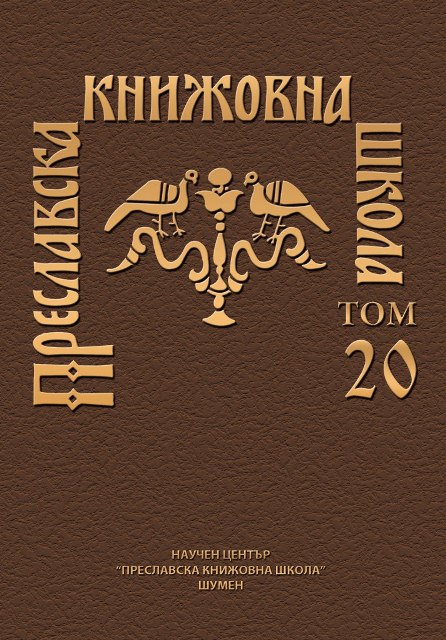СТАРОБЪЛГАРСКАТА ХИМНОГРАФИЯ И ЕПИГРАФИКА КАТО ЕЗИКОВИ ДОКУМЕНТИ
OLD BULGARIAN HYMNOGRAPHY AND EPIGRAPHY AS LANGUAGE DOCUMENTS
Author(s): Regina KoychevaSubject(s): History, Language and Literature Studies, Middle Ages, 6th to 12th Centuries, Philology
Published by: Шуменски университет »Епископ Константин Преславски«
Keywords: epigraphy; hymnography; dating; week ъ and ь; isosyllabic canons; Pliska; Lasaros inscription; pitcher; handle; pottery; reading; rune; Proto-Bulgarian; Yenisey Yenisey script
Summary/Abstract: The article consists of two parts. The first one, based on hymnographic and epigraphic data, examines the question of when the Old Bulgarian language began to lose the week ъ and ь, and finds out that this process did not start at the end of the IX century, as stated in a number of monographs and textbooks, but at the earliest during the first half of the X century. This means that the bilingual inscription on the tomb of Lasaros in Pliska, which inscription contains the form рап (< рабъ), cannot be dated to the end of the ninth century, as is made in some scholarly studies. The second part of the article proposes a new reading of the inscription on the handle of the pitcher, which was discovered in 1955 in Pliska by Stamen Mihaylov. The text is read as a mixed Cyrillic-runic one, which contains technical information related to the practice of pottery studios. One of the runes used in the inscription is present in the runic script from the Yenisey River basin in Siberia, and thus connects the Proto-Bulgarians who inhabited Danube Bulgaria with the mentioned Asian region.
Journal: Преславска книжовна школа
- Issue Year: 2020
- Issue No: 20
- Page Range: 38-51
- Page Count: 14
- Language: Bulgarian

